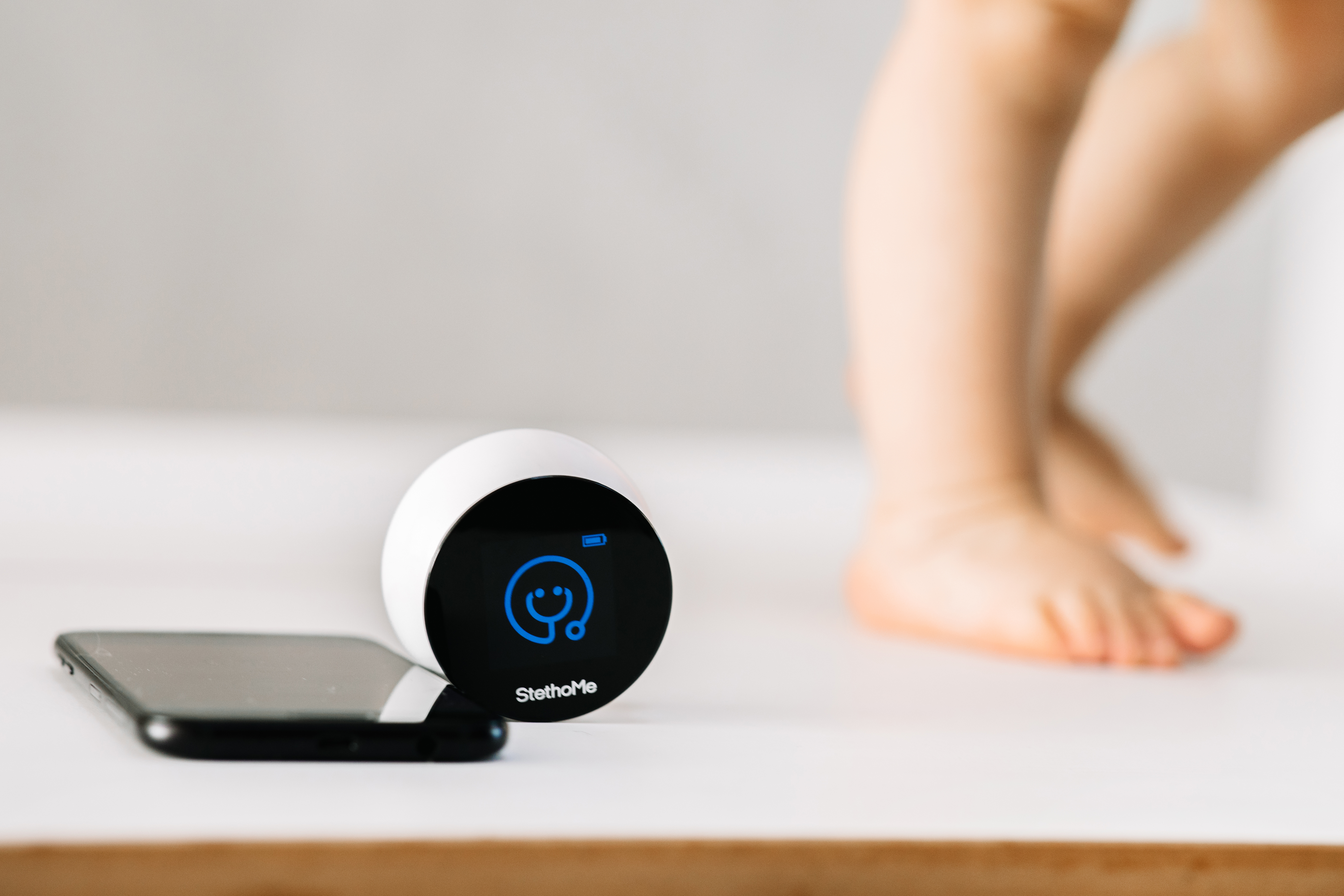
One of the most important aspects of the routine visit to the doctor’s office is the use of the stethoscope, known as auscultation. This technique allows the physician to listen to the lungs, heart, and other organs for unusual sounds that signify various conditions. Though many apps and telemedicine platforms have allowed patients to seek medical care in the comfort of their own homes, none have been able to replicate this essential in-person procedure. By recording sound and using artificial intelligence (AI), however, the unique StethoMe device has the power to add auscultation to remote healthcare.
With a startling 80% of lung and heart sounds being misdiagnosed and improperly treated in the WHO European region alone, StethoMe’s AI capabilities present as an attractive way to make these interpretations more consistent. In addition, the device has the potential to greatly reduce the number of unnecessary doctor visits. 70% of in-person visits are deemed unneeded and often end up exposing patients to other viruses while in the medical setting. By offering clinically supported AI in a stethoscope that can be used at home, StethoMe has the power to reduce the number of avoidable trips taken to medical centers.
What is the StethoMe Smart Stethoscope?
StethoMe is a small, wireless stethoscope that the consumer can use anywhere to conduct an auscultation. The device is paired with a smartphone app that tells the user where to properly position the stethoscope, which then collects audio from the procedure. This recording is decoded by AI that is trained to analyze respiratory and heart sounds. The processed information is sent to a physician, who then interprets the sounds as if they had the stethoscope pressed to their patient.
Using the StethoMe’s physician platform, the doctor is able to see in depth characterization from the AI, which is trained to identify wheezing and other abnormalities. In addition to the auscultation audio, StethoMe also provides the physician with a waveform of the audio. This adds a novel dimension to the examination, allowing the provider to identify visual characteristics associated with different symptoms.
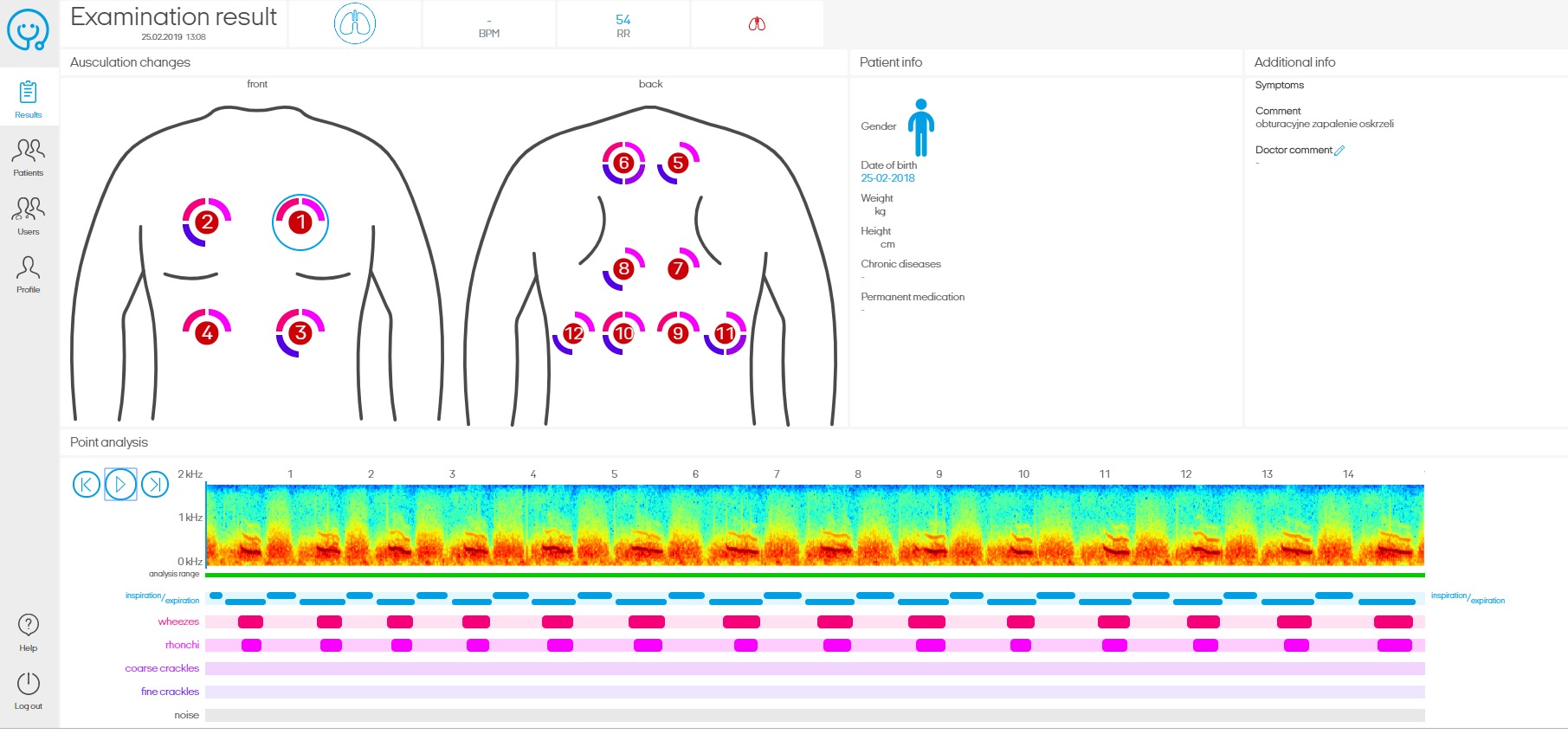
On the patient’s end, they simply see a green light that indicates normal breathing sounds, or a red light that indicates abnormality. Wojciech Radomski, StethoMe’s CEO, claims this was done to leave the diagnosis in the doctor’s hands rather than having the patient falsely identify conditions.
“We only present them red or green points, which means that based on this information, they can know if there is anything wrong or not,” said Radomski in an interview with DocWire News. “We do not want users to Google their symptoms and treat themselves, we want them to connect with doctors.”
The Artificial Intelligence Behind the StethoMe
Both the device and the AI algorithm for respiratory auscultation recently received CE Certification after performing comparatively to doctors in a study published in the European Journal of Pediatrics. What enables the device to be so effective is the accurate detection of basic respiratory sounds: wheezing, rhonchi (low-pitched wheezes), and coarse and fine crackles. The AI interprets the patient’s breathing sounds and selects segments that best represent each of these four abnormalities for the physician to see.
“These four categories of sounds are the basic sounds for oral lung diseases,” noted Radomski. “Based on these sounds, doctors can diagnose different lung diseases like asthma, COPD, cystic fibrosis, and all the others. We are not focusing on any particular disease. By recognizing those basic categories of the sounds, the device can be used for any lung disease.”
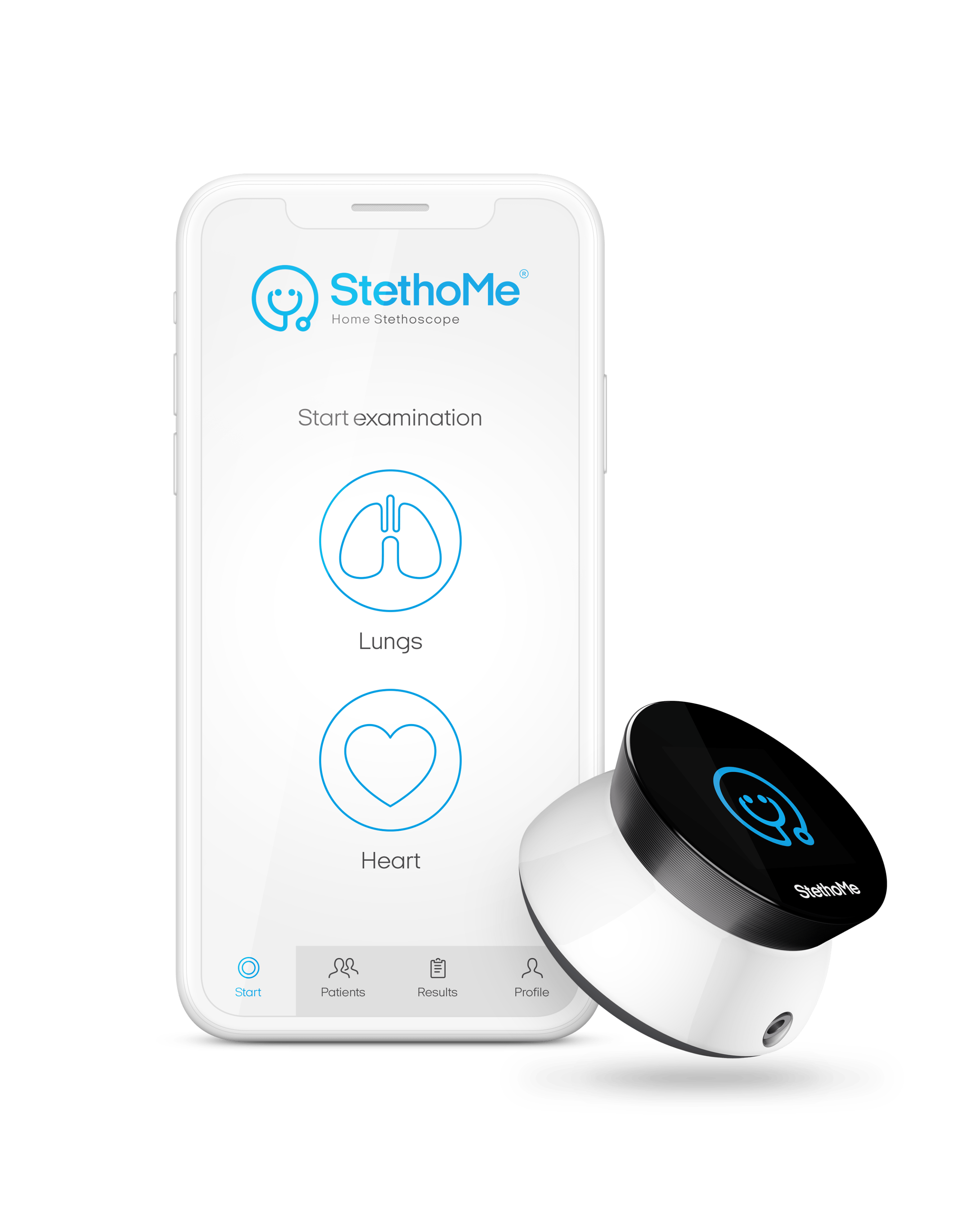
Sławomir Kmak, Business Development Director at StethoMe, noted that their AI algorithm was trained using over 12,000 auscultation sounds obtained using their device. There was no pre-existing “gold standard” for such sounds, therefore their team had to gather this data on their own. After consulting with several physicians, pulmonologists, physicists, and acousticians from their partner hospitals and institutes, StethoMe was able to produce an accurate algorithm for respiratory auscultations. Kmak noted that the device can be used as a traditional stethoscope as well, with a port to plug in headphones.
Revolutionizing Remote Healthcare
After receiving many awards for their product, StethoMe now has sights set on expansion and further development of their algorithm. The AI is currently approved for observing respiratory sounds in children, but Radomski claims that adult AI will be incorporated by the end of the year.
“We started by creating the device for children — as a small company we had to focus on one target group. Currently the device [can receive sounds] from children and adults, but our AI algorithms are certified for children only. Right now, we are expanding our data base. We already have recordings of adults, but we need to gather a bit more of them to re-certify the algorithms so they will work on both children and adults.”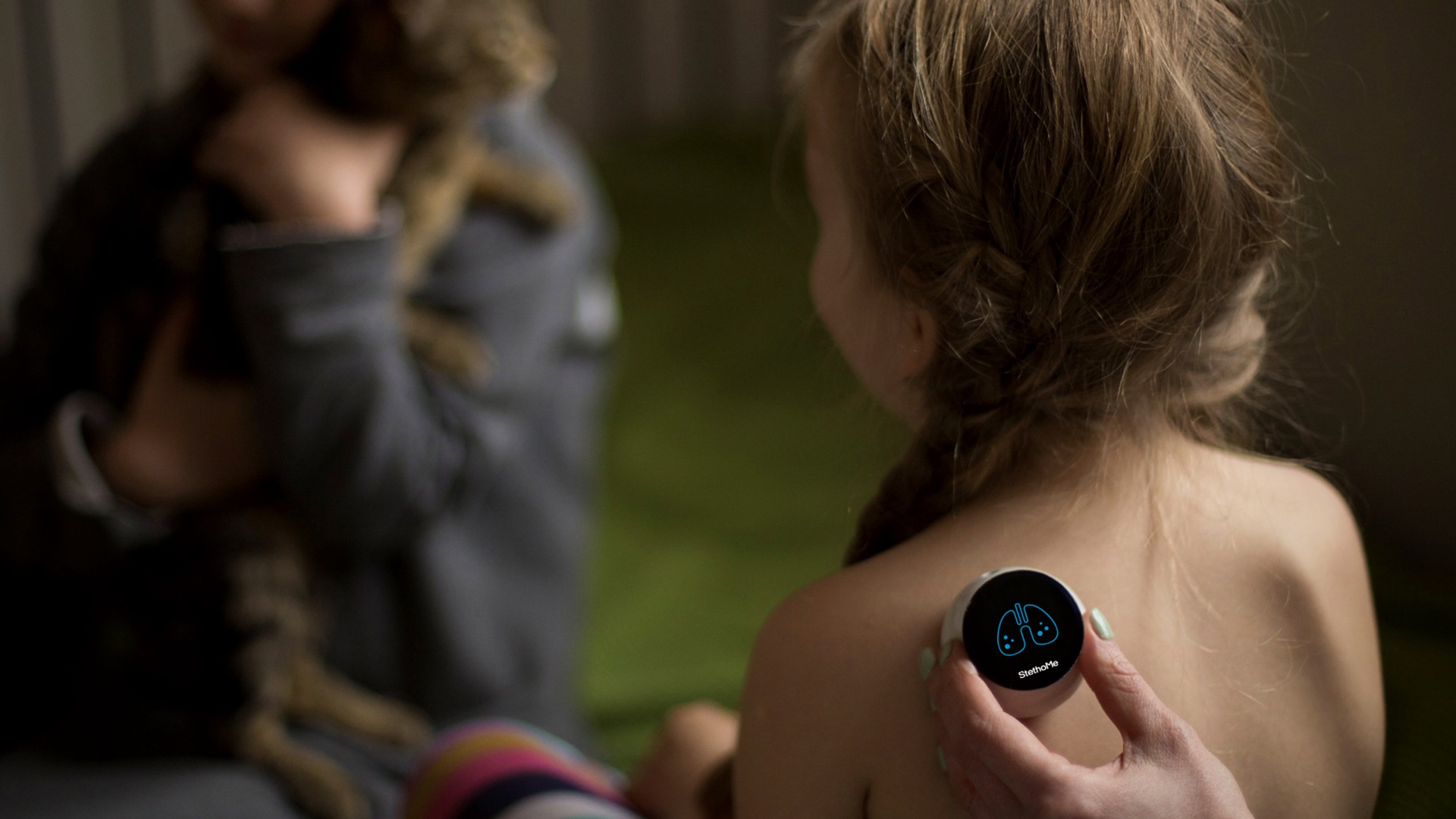
He added that StethoMe has already developed AI that analyzes heart sounds for abnormalities as well, and that certification for this solution is to be expected by the end of the year.
Regarding commercial availability, StethoMe plans to initially launch their product in Europe but to find business partners for international expansion as well. The company also has a multi-national, multi-centered clinical study underway that is designed to once again prove the devices efficacy.
“Our dream is to put StethoMe in every home like thermometers are today,” concluded Radomski. “We want to be the best company when it comes to recognizing any abnormalities in the lungs and heart in the next couple of years.”
—
The Story Behind StethoMe
The initial steps towards building StethoMe were taken by Radomski and co-founders Paweł Elbanowski and Marcin Szajek, who Radomski has been running an IT company with for over 10 years.
“We decided that we want to use our experience in the IT world and connect it with medicine. In fact, I came to idea that we could use our experience, the money that we earned, and the connections that we have in creating something bigger that will help more people in the world,” said Radomski.
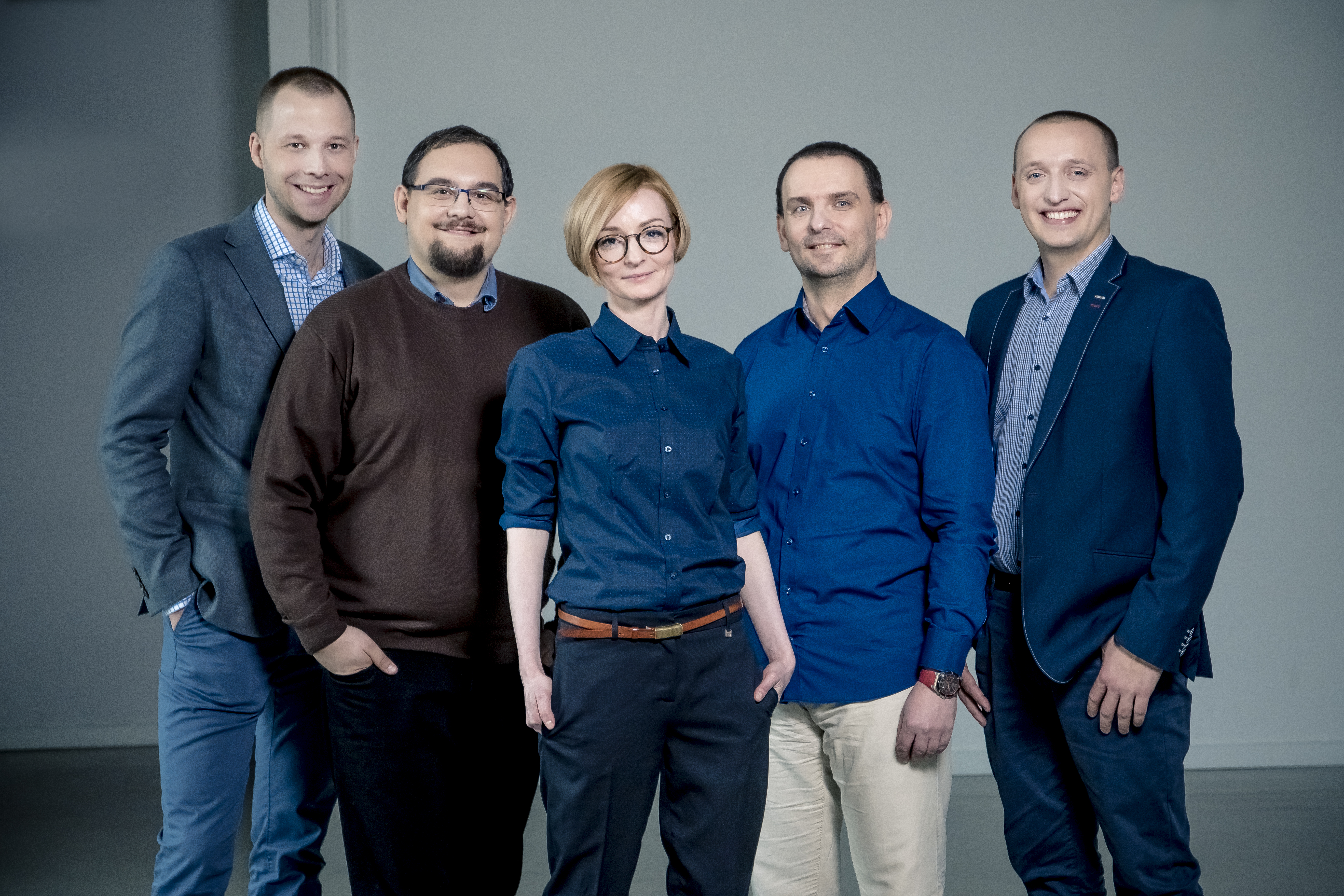 Radomski and his coworkers listed a sponsored post to Facebook seeking doctors who had problems they felt IT could solve, at which point they came across their new co-founders. Honorata Hafke-Dys and Jędrzej Kocińsk were not physicians, but were PhD’s from the University from Acoustics that presented this real-life problem Radomski and colleagues could solve with their IT expertise. At the time, Hafke-Dys and Kocińsk were parents of children who frequently had respiratory infections. This inspired the two to create a remote stethoscope that could help parents who were in similar circumstances. Together, these five created what is now StethoMe.
Radomski and his coworkers listed a sponsored post to Facebook seeking doctors who had problems they felt IT could solve, at which point they came across their new co-founders. Honorata Hafke-Dys and Jędrzej Kocińsk were not physicians, but were PhD’s from the University from Acoustics that presented this real-life problem Radomski and colleagues could solve with their IT expertise. At the time, Hafke-Dys and Kocińsk were parents of children who frequently had respiratory infections. This inspired the two to create a remote stethoscope that could help parents who were in similar circumstances. Together, these five created what is now StethoMe.







 © 2025 Mashup Media, LLC, a Formedics Property. All Rights Reserved.
© 2025 Mashup Media, LLC, a Formedics Property. All Rights Reserved.